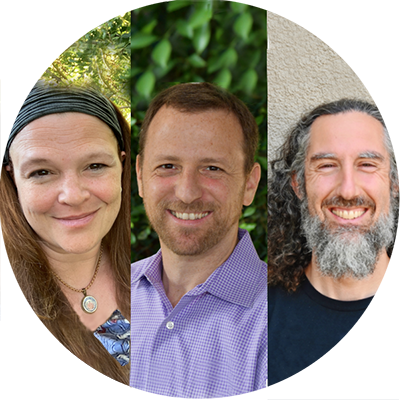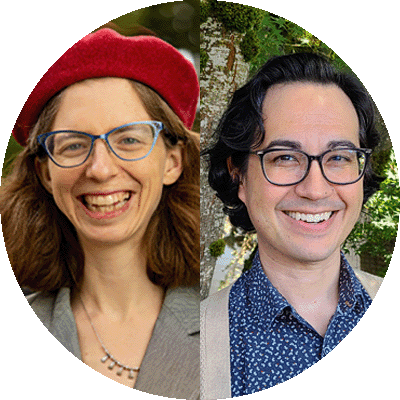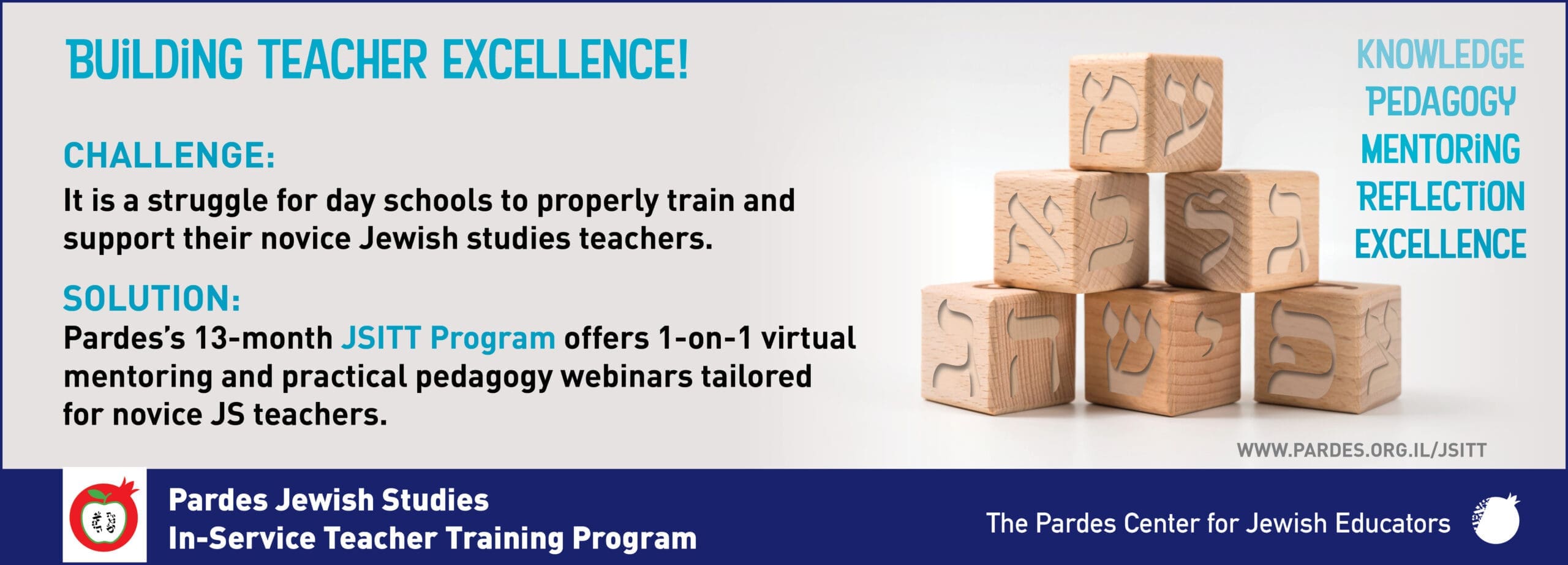Making the Case for Agada

Rachel Friedrichs is the Associate Director of the Pardes Center for Jewish Educators where she designs and runs programs to train and support Jewish educators. She holds a BA in Intellectual History from Brandeis University and an MA in Jewish Education from the Hebrew University; she is an alumna of the Pardes Day School Educators Program. Her most recent initiatives at Pardes have focused on directing the newly launched Pardes Teacher Fellowship.
The rabbis of the Talmud were intentional and thoughtful educators; an example of their consummate pedagogic skill is the way they interspersed narratives into their halakhic writings and teachings. Their use of agadot is an effective teaching tool because, simply put, people love stories. We evolved to tell stories, to become compelled by stories, to connect to the characters, drama, and tension in stories. Stories draw in our students and they have the power to make them care.
But you don’t have to take my word for it. R. Abahu says it himself (Sota 40a) when he explains why his teaching of agada is more popular than R. Hiyya’s important and sophisticated teaching of halakha. He compares his colleague’s halakhic teachings to precious gems and his own agadot to everyday trinkets. While acknowledging that halakha is holy and precious (like gems), he simultaneously recognizes that most people, by nature, are more likely to “jump on” the more accessible and understandable everyday items. R. Abahu embraces this simple fact about human nature and as a result, he has more students who are eager to learn. Like R. Abahu, we also want our students to be eager to learn Torah, so it behooves us to capitalize on their instinct to be drawn to stories. This, among many other reasons that I’ll outline below, is why it is so essential to incorporate the teaching of agadot into our teaching of Talmud and rabbinic literature, and into Jewish studies curricula in general.
Why Study Talmud....
Given that rabbinic literature is the bedrock of Jewish thought and practice, engaging with these texts provides an invaluable opportunity for our students to better understand the evolution of Jewish life, appreciate our unique intellectual tradition, immerse in ethical reflection, and unpack Jewish values. This process helps foster critical thinking, analytical skills, and a (hopefully!) deep appreciation for the beauty and uniqueness of Jewish thought….
The Parameters of Teaching Agada
Before I proceed, I need to delineate the parameters of what I mean by “teaching agada.” When I say agada, I mean the wide variety of stories that comprise about 30% of the Talmud. These stories can be about the rabbis themselves or the world around them. Some are long and intricate while others are but a few terse words. Their connection to the surrounding halakhic sugyot is sometimes obvious and sometimes more obscure. I am not including midrash agada, as that is a separate genre of writing, despite the similar name.
An additional point of clarification is about where and when to incorporate an agadic passage into teaching. I have two scenarios in mind: One is teaching a sugya, daf, or halakhic topic in the Gemara in which a story is included as part of the text. The questions to consider here are: Should I choose to teach it? Should I delve deeply into it or merely skim it? And, should I skip it altogether and move on to the next halakhic point? Alternatively, in scenario two, an educator may not be teaching a rabbinic literature class but is considering whether to bring in an agada in order to help illustrate a point, emphasize a moral value or help meet another one of the teacher’s educational goals.
Hesitation to Teach Agada
Despite the appeal of agada, there are multiple reasons that teachers might hesitate to teach it in their Gemara classes.
- Agadot are often cryptic, full of ambiguities and/or unfamiliar details, and we fear they will distract students from the goal of the lesson or the intended takeaway.
- Sometimes the agada does not seem to add much to our understanding of the text or topic at hand.
- We doubt whether the investment of time it often takes to explain the workings of an ancient marketplace or the structure of a clay oven—the kind of details often needed to truly understand a narrative passage from the Talmud—is truly worth it because that time comes at the expense of “more essential” learning.
- We don’t want the teaching of agadot to detract from our students achieving the text skill goals we’ve set, which demand a tremendous investment to master.
- Since our students are exposed to many dramatic, value-rich narratives in their Tanakh classes, we assume it is reasonable to devote Talmud class exclusively to the kind of rabbinic literature most unique to the Gemara—halakhic shakla vetarya (debate).
While these might be legitimate reasons to skip or deemphasize agadic passages in our Jewish studies or Talmud classes, I hope to make the case below that teaching agada has the potential to be an important, effective, and impactful component of any Jewish studies curriculum.
Agada in Service of Halakha
One very important function that agada serves is that it can help us better understand the halakhic portions of the Talmud in which they are nestled. Agadot provide context and grounding that can bring to life other parts of the Gemara. For example, a better understanding of the personalities and lives of the rabbis who make the halakhic arguments one might be studying helps the learner appreciate what may be motivating the different halakhic positions. It can help students appreciate why one rabbi might hold a more stringent position and another might hold a more lenient one. For example, in the very first mishnah of Berakhot, often taught in day schools, the different positions of the three-way mahloket become much richer when we understand the characters in light of their relationship expressed in other stories, such as the story of the oven that R. Eliezer deemed pure in opposition to the other rabbis (Bava Metzia 59b).
Additionally, agada can provide important historical and cultural context for halakhic discussions in the Gemara, which helps us better understand the halakha under discussion. For example, in the second chapter of Rosh Hashanah, the mishnah shares a mahloket between Rabban Gamliel and R. Yehoshua which includes a description of the process of how rosh hodesh was determined during the time of the Tana’im and, through the dramatic climax of the story, helps the learner truly appreciate the significance and power of declaring the new moon.
Lastly, the thoughtful juxtapositioning of agadot alongside halakhic sugyot can function as a sort of intratextual commentary. These stories can provide a new perspective or implicitly raise questions on the implications of a halakhic discussion. Following the sugya of kevod haberiyot (Berakhot 19b), for example, the Gemara shares the story of R. Ada bar Ahavah, who impulsively pulls the garment off of a woman in public because he thinks it contains shaatnez. When it turns out the woman is not Jewish and Rav Ada bar Ahava has to pay a fine for shaming her, one is reminded of the complexities of living according to the halakhic ruling of the preceding sugya.
The legal scholar Robert Cover, in his essay for the Harvard Law Review, “Nomos and Narrative,” beautifully encapsulates the vital and inextricable link between halakha and agada:
“No set of legal institutions or prescriptions exists apart from the narratives that locate it and give it meaning. For every constitution, there is an epic, for each decalogue a scripture. Once understood in the context of the narratives that give it meaning, law becomes not merely a system of rules to be observed, but a world in which we live.”
We ultimately diminish halakha if we take it out of its agadic context if we distance it too much from the lived human experiences which must embody it. The Sages knew this—that’s why there is agada in the Talmud.
Agadot Are Valuable in Their Own Right
Teaching agadic passages can also be enriching for its own sake—the richness of these texts and the way we approach them can engage and enlighten our students. Perhaps most obviously, the stories of the Talmud are powerful vehicles for teaching morals, raising ethical dilemmas, and imparting Jewish values. The story with R. Elazar ben Shimon and the ugly man is just a few lines long in the Gemara (Taanit 20a) and yet it is so rich it can be used to teach about forgiveness, the potentially negative effects of status, the importance of not making superficial judgments, the unintended impact of our speech on others, the holiness of God’s creations and more. It is not hard to imagine how teaching this story can be included in curricula for holidays, parashat hashavua, or halakha.
Many of the rabbis of the Talmud and the stories in which they appear are integral parts of the DNA of the Jewish tradition and worldview as we know them today. Teaching these agadot enables our students to enter into relationships with these figures who helped shape the halakhic process and instantiate Jewish life as many of us know it. It is, therefore, a valuable means for building Jewish identity and instilling a deeper understanding of our Jewish heritage. Just as we are the cultural inheritors of Avraham, Moshe, David, and other greats of the Tanakh, so too are we the ethical heirs of Hillel, R. Akiva, Rav, and Shmuel. For example, the story of R. Shimon bar Yohai arguing with R. Yehuda about the appropriate attitude to take towards Roman culture (Shabbat 33b) begs us to ask similar questions about our own attitude toward the Western culture in which we are immersed, while also connecting our students to the chain of our intellectual tradition that has been grappling with this question for millennia. If students can see themselves in these texts, then they can also see themselves as part of our tradition.
Engaging deeply with agadic passages can also be used to cultivate certain kinds of thinking, or habits of mind, which will serve students well as they continue to grow as Torah learners and emerge as engaged citizens of the Jewish community. Thinking metaphorically, which many Talmudic stories require, helps students appreciate the significance of details in a text and heightens their awareness of multiple possible meanings. Reading agadot also helps develop the skills to draw out the bigger lesson or takeaway from a particular story and promotes inductive reasoning. Encouraging our students to become close and critical readers of these stories reminds them that there is depth beneath the surface of our texts and should inspire them to keep learning.
Finally, incorporating agadot into our classrooms can be an easy and effective way to differentiate our instruction and better meet the learning needs of our students. There are students sitting in our day school classrooms who will never connect to, become excited by, and/or really understand the logic of many of the halakhic texts that comprise most of our Talmud curricula. We want these students to feel like they belong in our Jewish studies and rabbinic literature classrooms, and that there are parts of the Talmud that do in fact speak to them. While it might be hard for some students to follow the intricacies of compensating for damages to a fellow man in Bava Kama, the relatable stories that are included in the sugya, like that of the boy who was injured by another man’s donkey, bring to life the inherent tensions we face when trying to monetarily quantify people’s bodies and their pain. Agada can serve as an access point for learners with stronger inter- or intra-personal skills or a love for drama and literature. These students are now more likely to appreciate why the rabbis debate in such detail the seemingly trivial aspects of paying these damages.
Strategies for Effectively Incorporating Agada in Our Classrooms
Here are some strategies for making the teaching of agada as impactful and valuable as possible:
- Remember your goals: Ask yourself if having students learn this narrative passage helps achieve your class’ or course’s learning goals. Alternatively, ask yourself, “What is added by the study of this agada?”
- Finding the right agada: The most comprehensive resource for finding an appropriate agada is Bialik’s SeferHaAgada, categorized by subject and including a thorough index. It has been translated into English and the original Hebrew is fully accessible and searchable at agadastories.org.il
- Consider reworking the story: As mentioned above, sometimes agadot contain ambiguities, awkward phrasing, obscure references, or they are written in dense Aramaic. If it is not one of your goals to help students develop the skills to overcome these challenges, then consider editing the text, filling in gaps, or reworking the translation of the story to mitigate these issues. (I recommend being transparent with students about these adjustments.) By making these tweaks, students can focus on the aspects of the story that are most relevant, meaningful, and connected to your goals.
- Be intentional about presenting the story visually: Sometimes the way we lay a story out on a page can make a big difference in students’ comprehension. Here are some examples:
- Break longer stories down and give the sections headings.
- Italicize or bold key words or phrases.
- Number the lines of the text for easy referencing.
- Present dialogue like a script or a play.
- If there are vocabulary words or text skills you do hope to reinforce through the story, English and the original language can be integrated.
- Scaffold students’ ability to draw meaning from the story: I have found R. Yishai Zinger’s thinking routine of mah bo, to be very powerful in helping students appreciate the deeper meaning of agadot. This consists of three core prompts (which can be expanded) to scaffold students’ processing of a story.
- What is the story about? (mah bo) What do you notice about the story? What details of the story catch your attention? Who are the main characters and how would you describe them?
- What is at the heart of the story? (mah libo) What is the story trying to teach or what is its main takeaway? Why did Hazal include this story here?
- What is this story to me? (mah li bo) Do I agree or disagree with the story’s takeaway? How does this story relate to my life? Have I ever felt like one of the characters or been in a similar situation? Does this story affect the way I feel about any of the characters/rabbis included? How might I act differently, after reading this story?
- Bring the story to life: Consider ways to dramatize the story to make it even more engaging or relatable for students. Bring in props or costumes; have students act out parts of the story or recite dialogue from the agada like a play; ask students to step into the shoes of the characters of the story with bibliodrama-like techniques. The more lively and real these agadot seem to students, the more we are capitalizing on the inherent power of narrative to create more enduring understanding.
Let me conclude with one last agada from the Bava Kama 60b. R. Ami and R. Asi are learning with R. Yitzchak Nafha. One wants to learn halakha, the other agada. The pair keep interrupting and pestering their teacher until he shares a parable: “I feel like a man with two wives, an older wife who plucks out all his black hairs, and a young wife who plucks out all his white hairs—he ends up completely bald!” With humor, the master gently chastises his students, as if to say, “Nothing good is achieved if we are at odds, let’s work together towards our common goal of learning Torah.” With tremendous skill and finesse, he proceeds to render both a halakhic and agadic teaching from a single verse, demonstrating the value of both halakhah and agada. I encourage us to aspire to be like R. Yitzhak Nafha. How can we effectively embrace our students’ desire to learn agada and our need for them to learn halakha? Perhaps by striving to emulate the creativity, humor, and erudition of R. Yitzhak Nafha, we too can unite these two rabbinic literary traditions in our classes to maximize our students’ learning.



Rachel Friedrichs is the Associate Director of the Pardes Center for Jewish Educators where she designs and runs programs to train and support Jewish educators. She holds a BA in Intellectual History from Brandeis University and an MA in Jewish Education from the Hebrew University; she is an alumna of the Pardes Day School Educators Program. Her most recent initiatives at Pardes have focused on directing the newly launched Pardes Teacher Fellowship.
Reach 10,000 Jewish educational professionals. Advertise in the upcoming issue of Jewish Educational Leadership.
Do you want to write for Jewish Educational Leadership? See the Call for Papers for the upcoming issue.


FROM THE EDITOR: Fall 2023
Fascinating. Infuriating. Uplifting. Complex. Boring. Inconsistent. Logical. Brilliant. Eclectic. Irrelevant. Compelling. Frustrating. Inspiring. Ancient. Contemporary. The Talmud evokes all the above, and more. I vividly remember my first encounter with Gemara. I must have been ten years old, and my family was in a bungalow colony in the Catskills. Rabbi Cohen taught Gemara to the older boys, of which I was not, but I asked permission to sit in and listen. I loved following the discussions and debates, even though I couldn’t read any of it and retained none of the content.


The Block Method for Teaching Gemara
By its very nature, teaching Gemara seems to defy everything we know about education. When we teach math, or language, or anything else, we start with the simple and easy-to-grasp aspects of the study area and gradually increase the level of challenge and difficulty. For example, we begin with addition and slowly move on to subtraction, multiplication, and division. We certainly don’t touch algebra until these are firmly in place. One couldn’t imagine a math class that requires knowledge of Pythagoras’ theorem presented to a class that has not yet mastered multiplication.


The Puzzling Talmud
A sixteen-year-old American Jewish day school student named Brandon (a self-chosen pseudonym) reports that he likes studying Talmud. What does he like about it? “I like the process,” he says. “It is kinda like a puzzle, that you have to get each word, and fill it in so it creates the whole text.” Brandon approaches his study of Talmud knowing that it’s going to be hard. Every word might take some effort to decode. Eventually, however, he can put it all together.


A Multidimensional Approach to Teaching Rabbinics
Pressman Academy is an early childhood through 8th grade school in Los Angeles serving a religiously diverse group of students. The school’s Judaics program, which includes Hebrew language, Jewish history, Tanakh, and daily prayer, affords a maximum of two weekly periods to teaching Rabbinics (in grades 5-8), presenting a significant challenge of what to include and how to approach it.


The Sanhedrin is in Session: Experiencing Rabbinic Literature
On Tuesday morning Rabban Gamliel called the gathered people to order. A letter had arrived from a northern district court in the Galilee which required the attention of the Sanhedrin. Rabban Gamliel took his seat at the head of the semi-circle of esteemed Rabbinic colleagues. R. Yehoshua sat on one side of him and R. Eliezer sat on the other.


Replacing Relevance with Relationship
A relationship to Talmud study is highly valuable to those who possess it. Few other activities manage to combine elements of intellectual inquiry, spiritual questing, and moral development in the almost alchemical way that the study of Talmud does. And yet, there are a number of hurdles students must overcome in order to develop an independent relationship with the Talmud. First and foremost, studying Talmud in the original Hebrew and Aramaic can feel scary to the uninitiated. Second, the logic of the Talmud is foreign to students at first. Finally, students may wonder what a text from 1500 years ago might have to say to them.


Teaching Talmud in Secondary Schools: Masorah and Modernity
Teaching of Talmud in traditional secondary schools has been a conundrum from the day it was decided to teach Talmud as part of the standard Jewish studies curriculum. Programs for yeshiva high school graduates in Israel and around the world are consistently populated by an overwhelming percentage of students who, even after six years of multiple weekly hours of Talmud instruction in secondary schools, are helpless in the independent study of Talmud. These students are successful independent learners of advanced mathematics, natural sciences, complex technology, and even humanities, but in Talmud, they require an embarrassing degree of spoon-feeding.


Pre-Mishnah: The Missing Link
I teach 5th grade Judaics at Fuchs Mizrachi School, a Modern Orthodox Zionist school (Cleveland). Upon entering the world of Torah SheBe’al Peh, a student is first greeted by the Mishnah—a complex and sophisticatedly interwoven compendium of Jewish law and wisdom. Students struggle to understand its relevance, how and why it was created, and its importance to the scope of their Torah learning. They ask, “Why are we learning Oral Torah?” and “Why should I care?” but underlying those questions is the more fundamental, “What is the Oral Torah?” While some choose to address this piecemeal over the span of many years, I believe that it is important to address it up front, in an organized manner.


Anatomy of a Gemara Lesson
You have been there, too, right? You thoroughly prepared a Gemara lesson by formalizing how you will explain the shakla vetarya, you concocted attention-grabbing examples and cases, charts to organize the conflicting opinions, and provided a translation and question practice worksheet. You slowly read the Gemara aloud while students annotated the text or completed linear translation sheets. You patiently and clearly explained the concepts and reasoning on a first, second, and even third pass of the reading.


Tokhehah Leshem Shamayim
One day, in a 7th grade lesson during our unit on tokhehah (the mitzvah of rebuke), a student shouted out from across the classroom: “This is tokhehah leshem shamayim!” In this moment, with one eloquent and original phrase, this 7thgrader had connected the learning in our current unit of tokhehah with the concept of leshem shamayim (for the sake of heaven) from our previous unit of mahloket (disagreement). This delighted us because it showed that the concepts of mahloket we had been teaching were not just retained for the duration of our unit, or for a test, but were concepts students internalized, held on to, and could apply to new settings and used in unique ways.


Extending the Reach of Rabbinics
Morah M.’s 5th-grade class is curating a museum exhibit showcasing artifacts that represent family legacy and tradition. The items are described on a placard that explains: These candlesticks were my Bubby’s and now my mother and I use them for Shabbat. When I chose them, I thought of the story about R. Yehuda HaNasi that we learned (Ketubot 103a). Before he died, he told his family that they should continue to set the table the same way, keeping the lamp in its usual place. We’re sort of doing the same thing when we use Bubby’s candlesticks.


Talmud Education for Diverse Learners: Taking the “Long but Short” Road
Teaching Talmud to weaker students can present many challenges not typically found in traditional Gemara classes. Navigating a text in a foreign language, especially one with the unique structure and rules of the Talmud, can be daunting for those grappling with language-based difficulties. Educators must realistically decide which teaching method—skill-based or discussion-based—will best set diverse learners up for success, and how demanding a Talmud course should be for students not likely to pursue this type of Torah learning in the future.


Teaching Talmud Guided by Essential Questions
Standing at the edge of the sea can be an awe-filled experience—the incomprehensibly vast expanse of water with no end in sight is both inspiring and intimidating. We would not consider entering it, whether to swim, sail, surf, cruise, or dive without proper preparation. Similarly, the Sea of Talmud is rich with information, personalities, debates, and much more. It, too, can inspire and intimidate with its vastness and complexity, and we should not expect our students to be able to jump in and navigate it without context and a roadmap. To prepare our students as they embark on their journey into the Oral Torah, we need to define our goals and our strategies for achieving them.


An Alternative Approach for Teaching Talmud
In my first year of teaching, I taught a student whom we will call Yossi. From the time he started 1st grade reading groups, Yossi was placed in the lowest track. This pattern persisted through my 11th grade Gemara class. A few weeks into the first semester of 11th grade, Yossi approached me after class to ask me a burning question which he was embarrassed to ask in front of his peers. He asked, “Who is Rabbi Baraita?” I said, “What do you mean?” He responded, “My past teachers kept explaining ‘the Baraita says…’ Who is Rabbi Baraita and why is he referred to as the Baraita?”


“Wait, What?!” Teaching Jewish Law in a Reform Jewish School
As a teacher at Rodeph Sholom School (RSS), I have for some time considered what it means to teach Torah SheBe’al Peh in a Reform Jewish independent school. What I offer here is a taste of how my colleagues and I have strived to shape our 7th grade Rabbinics unit so that it is aligned with our school’s mission and meets the needs of our specific community of learners. And while every school is unique, I am hopeful that the insights I’ve gained from teaching one unit on the development of Jewish law are instructive for any Jewish day school grappling with teaching Torah SheBe’al Peh.


A Learner-Centered Approach to Teaching Gemara
Traditional methods of teaching Gemara, such as hevruta learning followed by an interactive shiur, have stood the test of time. When teaching beginner students, however, this approach is less common, given their lack of prior knowledge or skills. As a result, many teachers prefer a frontal approach, perhaps projecting the daf on the SMART board and presenting the text phrase-by-phrase while students take notes between the lines of the traditional Vilna text. If hevruta time is used, it is often for the students to review material rather than for them to try to decipher the text. In this article, we are going to propose a method for using a modified version of the traditional approach which can be used for learners starting out on their Gemara learning careers.


Why Learn Talmud?
Some of the articles in this issue describe the joy of studying Talmud, others break down the complex processes to make it more accessible to students or to enable the students to engage with it meaningfully. And just to make sure that we covered the bases of both the how and the why of Talmud study, we asked our authors to weigh in separately on the question: “Why do you think that day school students should be learning Gemara/Rabbinics?” We invite you to join that discussion.
Fall 2023 Journal Credits
JEWISHEDUCATIONALEADERSHIP
Jewish Educational Leadership is a publication of The Lookstein Center for Jewish Education of Bar Ilan University.
Chana German, Executive Director
JOURNAL STAFF
Hyim Brandes | Editor
Zvi Grumet | Editor-in-Chief
Chevi Rubin | Editor
Shani Sicherman | Copyeditor
Please send correspondence regarding journal content to zvi@lookstein.org.
The Lookstein Center publications present a variety of viewpoints. The views expressed or implied in this publication are not necessarily those of the Center.
EDITORIAL OFFICES AND ADVERTISING
The Lookstein Center for Jewish Education
Bar-Ilan University
Ramat Gan 5290002 Israel
Tel: +972-3-531-8199
US: +1-646-568-9737
www.lookstein.org
© 2023 by The Lookstein Center for Jewish Education.
All rights reserved.





